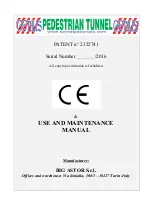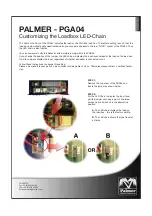
QWICK KURB
®
, INC.
Long Term Installation Manual
INSTALLING TO THE ROADWAY
FINE TUNING
After the L60 SEPARATOR units are in position and before drilling is complete, inspect for
correct alignment. Installers may correct minor misalignments by pulling the L60
SEPARATOR sideways.
If a conveyor is used, the easiest way to fine tune is to keep the alignment correct as the
units reach the bottom of the conveyor, just prior to exiting.
BOLTING TO THE ROADWAY – ASPHALT AND CONCRETE SURFACES
Installations on both concrete and asphalt surfaces use the FS50 Pavement Anchor which
consist of a 5/8”x 3-1/2” nylon expansion molly, a 5/8”x 6” lag screw and 5/8” washers.
This assembly will allow the lag screw to be backed out in order to de-install the system.
Only a ¾” hole will be left in the pavement which can be filled in with commercially available
pavement repair products.
Occasionally, such as on bridge decks and in tunnels, there are depth restrictions for anchor
penetration. For 3” maximum depth penetration, use a 5” long lag bolt. Place a mark on the drill bit
5-¼” from the tip, and proceed as indicated above. When measured vertically, the hole will be no
more than 3” in depth. For more stringent depth restrictions, contact
QWICK KURB
®
, INC
.
Customer
Service to obtain alternate anchoring instructions, including the use of chemical anchors.
To bolt to the roadway:
Each L60 SEPARATOR unit has two holes located on opposing sides that are angled toward
the center of the L60 SEPARATOR. Each L61 Male and L62 Female End unit has one hole
angled parallel to the length of the L60 SEPARATOR units. Each hole is sized to
accommodate the plastic expansion anchor.
1. Drill holes to a minimum depth of 8”.
TIP: Place a mark on the drill bit 8” from the tip. Be especially aware of the possibility of shallow rebar
or post tensioning tendons, as damage to drills is a risk.
Phone: 800-324-8734
Fax: 813-645-4856
www.qwickkurb.com
1/21/2016
19
















































